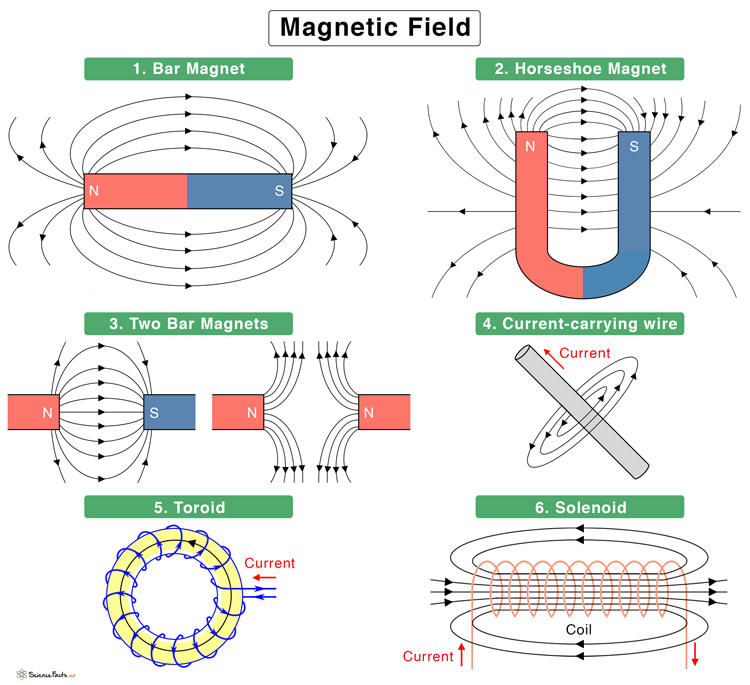13 Magnetic Fields in Marine Biology
Learning Outcomes
- Define magnetic fields and magnetic flux;
- Explain the relationship between electric currents and magnetic fields;
- Describe the motion of charged particles in magnetic fields;
- Explain how electric fields are used by marine organisms for navigation and hunting (e.g., electric fish);
- Describe the effects of Earth’s magnetic field on marine navigation;
The Role of Electric Fields in Marine Organisms
The Earth's magnetic field plays a pivotal role in the navigation and survival of numerous marine organisms. Many species, from sea turtles to sharks, have evolved the ability to detect and utilize this geomagnetic field to navigate vast oceanic distances, helping them locate feeding grounds, breeding sites, and migration routes. These animals are equipped with specialized cells or receptors that allow them to sense the magnetic field, functioning much like a biological compass.
One of the most well-known examples is the migratory behavior of sea turtles. These reptiles can detect the Earth's magnetic field and use it to navigate across entire ocean basins, returning to the beaches where they were born to nest. Sharks, similarly, rely on the geomagnetic field to orient themselves during long migrations. They can even detect local magnetic anomalies caused by underwater geological features, which may guide them to specific locations.
Sharks and rays are particularly sensitive to magnetic fields in combination with their electroreception abilities. By sensing the electric fields produced by the muscles and nervous systems of potential prey, these predators can hunt in murky waters where visibility is limited. The ability to detect both electric and magnetic fields enhances their capacity to locate prey, even if it is buried or hidden.
Overall, the Earth's magnetic field serves not only as a navigational tool but also as a critical element in hunting strategies for species that rely on electroreception. Understanding how marine organisms interact with the magnetic field is vital for their conservation, especially in the face of increasing human-induced electromagnetic pollution and climate change.
Magnetic Fields and Magnetic Flux: Definitions
A magnetic field is a region of space where magnetic forces are exerted on moving electric charges, such as electrons. It is generated by moving electric charges (currents) or by certain materials like magnets. Magnetic fields are represented by lines of force that point from the north pole to the south pole of a magnet, and their strength and direction at any given point are indicated by the magnetic field vector. The basic unit of a magnetic field is the Tesla (T), or alternatively Gauss (G), where 1 Tesla = 10,000 Gauss.
Magnetic fields play a crucial role in many physical processes and biological systems. In the context of marine biology, Earth's geomagnetic field is essential for the navigation abilities of many animals, such as sea turtles, sharks, and migratory fish, which can sense the magnetic field to orient themselves and navigate long distances.
Magnetic flux refers to the total quantity of magnetic field passing through a given area. It is a measure of how much magnetic field "flows" through a surface, and it depends on both the strength of the magnetic field and the size of the area through which the field lines pass. Mathematically, magnetic flux (Φ) is defined as the product of the magnetic field strength (B) and the area (A) through which it passes, adjusted for the angle (θ) between the field lines and the surface normal:
Φ = B ⋅ A ⋅ cos (θ)






.png)
.png)
.png)
Comments
Post a Comment